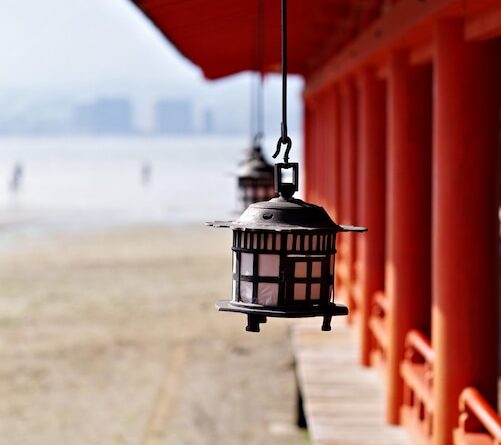Top 3 Scenic Views in Japan
Exploring Japan’s Three Best Scenic Views
Japan, an archipelago steeped in natural beauty and rich cultural heritage, offers breathtaking landscapes that have inspired poets, artists, and travelers for centuries. Among its most celebrated vistas are the Nihon Sankei (日本三景), or the Three Scenic Views of Japan, which include Matsushima, Amanohashidate, and Miyajima. These iconic sites are not just picturesque; they encapsulate the essence of Japan’s aesthetic sensibility and historical significance.
- Matsushima: A tranquil bay adorned with over 260 pine-covered islets.
- Amanohashidate: A narrow sandbar resembling a bridge between heaven and earth.
- Miyajima: Home to the famous floating torii gate of Itsukushima Shrine.
Matsushima: A Symphony of Islands
Located in Miyagi Prefecture, near Sendai, Matsushima is renowned for its stunning bay filled with more than 260 small islands, each cloaked in lush pine trees. The beauty of Matsushima is so profound that the famous haiku poet Matsuo Basho, known for his deep appreciation of nature, was left speechless by its charm. His poetic verses capture the essence of this breathtaking view, which remains a source of inspiration for many.
The islands are best explored by boat, allowing visitors to admire the intricate landscape from the water. The calmness of the bay, paired with the gentle sway of the boats, creates a serene atmosphere that invites reflection and tranquility. The view is particularly stunning during sunrise and sunset when the sky casts a golden hue over the water, enhancing the beauty of the islands.
Amanohashidate: The Bridge to Heaven
Moving to Kyoto Prefecture, Amanohashidate presents a different yet equally enchanting spectacle. This narrow sandbar stretches across the mouth of Miyazu Bay and is often referred to as the “Bridge to Heaven” due to its ethereal appearance. The name itself, which translates to Amanohashidate, reflects the belief that this natural formation connects the earthly realm with the divine.
The best way to appreciate Amanohashidate is from the surrounding mountains, where visitors can find viewing platforms that provide panoramic vistas of the sandbar. The sight of the pine-covered landmass, flanked by the serene waters of the bay, is nothing short of magical, especially during the early morning light or the soft glow of late afternoon. Many visitors partake in the local tradition of flipping themselves upside down to view the sandbar, as it is said to resemble a dragon soaring into the sky when viewed from this angle.
Miyajima: The Floating Torii Gate
Off the coast of Hiroshima lies Miyajima Island, famous for its iconic Itsukushima Shrine and the striking floating torii gate. At high tide, the gate appears to float gracefully on the water, creating a surreal and dreamlike landscape. This sight has captivated countless visitors and remains a symbol of Japan’s cultural heritage.
The shrine itself is built over the water, and its architecture is a stunning example of Shinto design. The entire complex, set against a backdrop of lush forests and the serene waters of the Seto Inland Sea, provides a visual feast. Visitors can explore the island’s hiking trails, where they may encounter wild deer and breathtaking views from the mountain tops. The experience is both spiritual and visually captivating, making Miyajima a must-visit destination for anyone traveling in Japan.
The Cultural Significance of Nihon Sankei
The concept of Nihon Sankei dates back to the 17th century, when scholar Hayashi Gahō identified these three locations as embodying the pinnacle of Japan’s natural beauty. Each site holds deep cultural and historical significance, drawing connections to Japan’s spiritual beliefs and artistic traditions. For centuries, artists and writers have depicted these landscapes, further solidifying their status as national treasures.
Travelers who visit these sites not only witness their beauty but also engage with the stories and traditions that have been passed down through generations. The serene landscapes serve as a backdrop for reflection, prompting visitors to appreciate the harmony between nature and culture that defines Japan.
Planning Your Visit
For those eager to experience the enchanting views of Matsushima, Amanohashidate, and Miyajima, planning is essential. Each location is accessible via public transportation, with well-marked routes for tourists. Here are some tips for making the most of your journey:
- Best Time to Visit: Spring and autumn are ideal seasons, as the weather is pleasant, and the landscapes are particularly vibrant with cherry blossoms or autumn foliage.
- Local Cuisine: Don’t miss the opportunity to try local delicacies. Matsushima is known for its fresh seafood, while Amanohashidate offers unique rice dishes and Miyajima is famous for its grilled oysters.
- Accommodation: Stay in traditional ryokans (Japanese inns) for an authentic experience, where you can enjoy tatami mat rooms and kaiseki meals.
Reader Q&A
What is the best time to visit the Nihon Sankei?
The best times to visit are during spring for cherry blossoms or autumn for vibrant foliage, offering stunning views and pleasant weather.
How can I travel between these scenic spots?
Public transportation, including trains and ferries, connects these locations efficiently, making it easy to explore each site without a car.
Are there any local dishes I should try?
Yes, each region has its specialties: Matsushima is famous for seafood, Amanohashidate offers unique rice dishes, and Miyajima is known for grilled oysters.
The Nihon Sankei, with its three emblematic spots, embodies the heart and soul of Japan’s unparalleled beauty. Each of these views carries historical and cultural significance, promising a mesmerizing experience for every traveler. For those seeking a glimpse into Japan’s poetic and natural grandeur, a visit to these scenic locations is a must.

